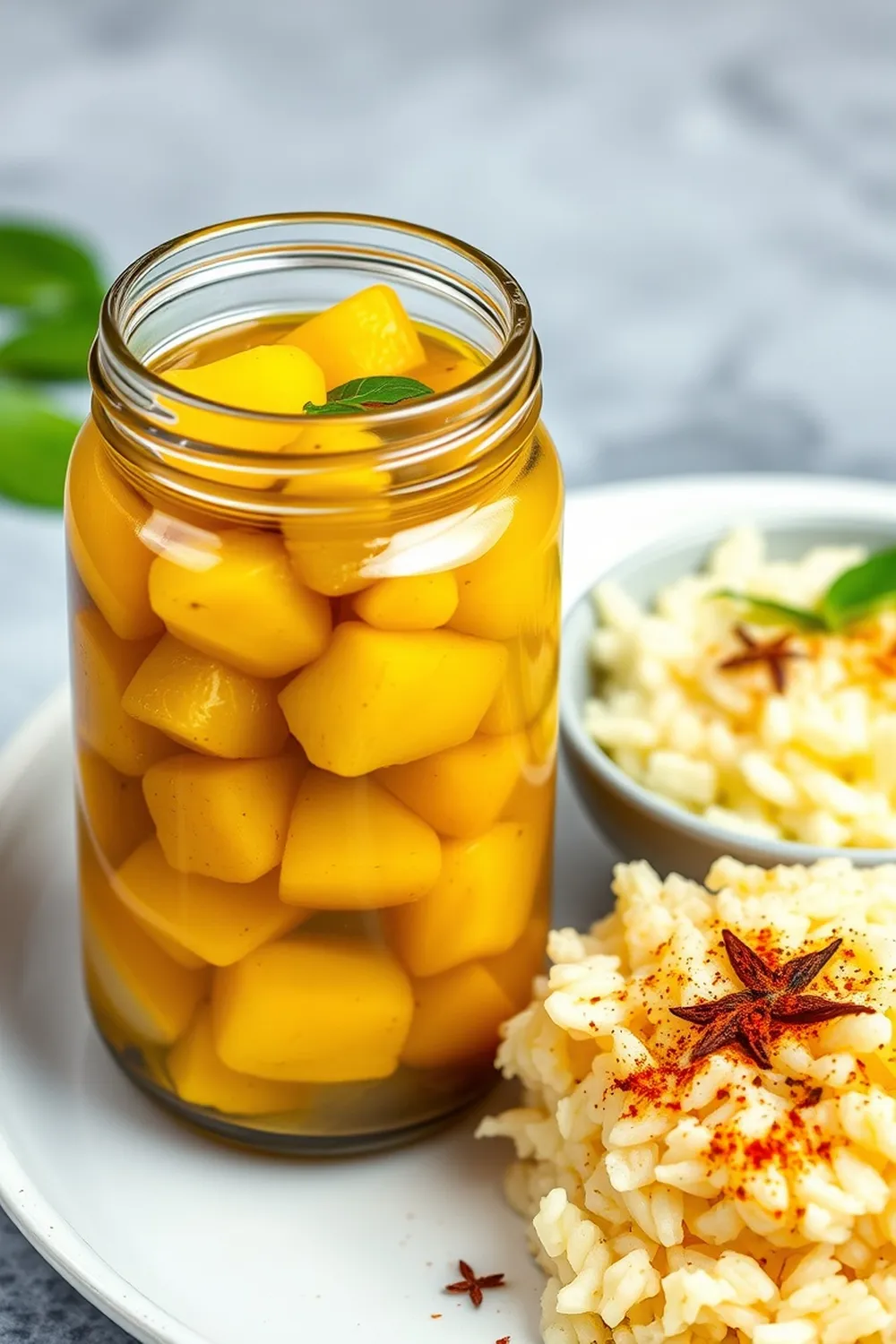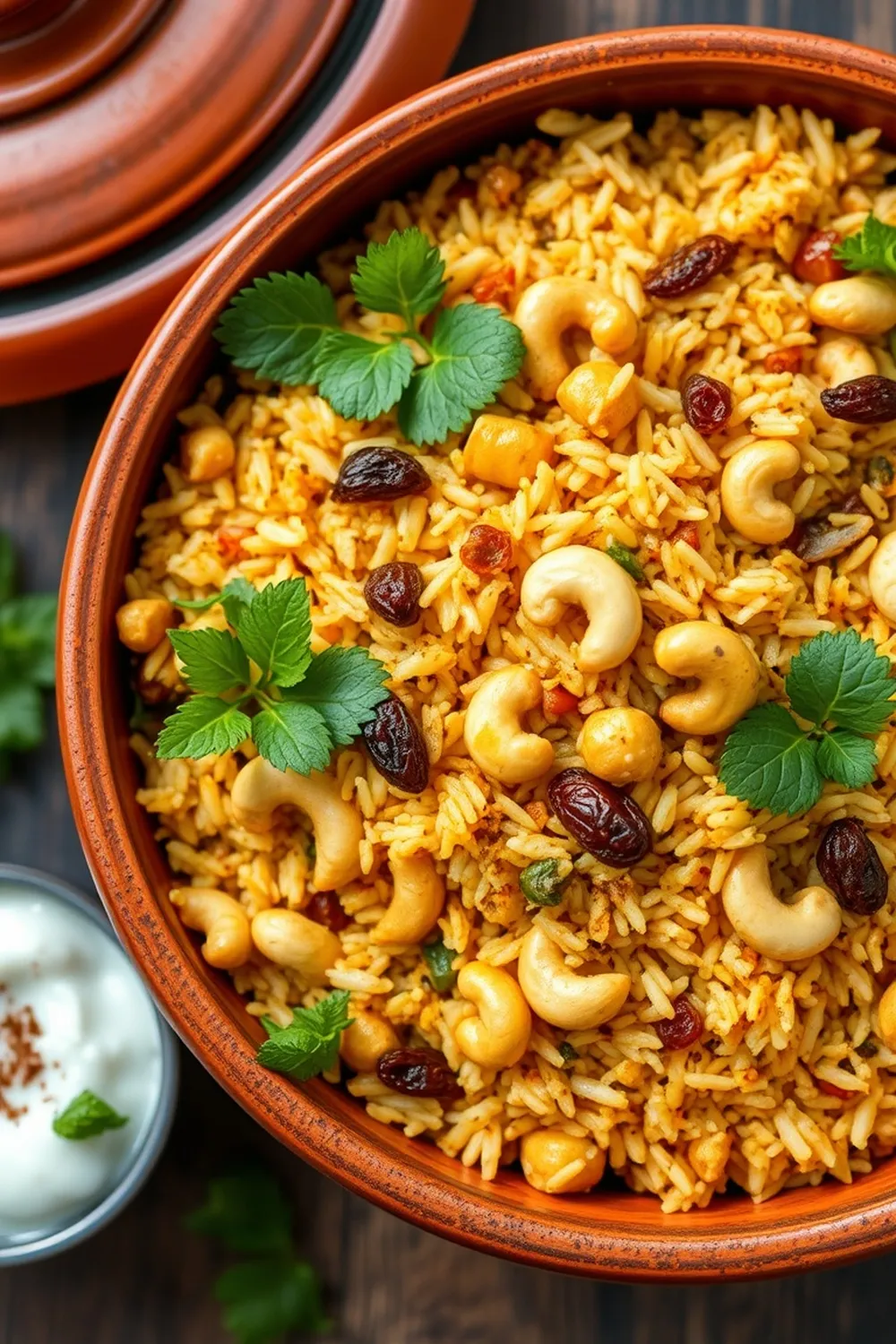- Wash and pat dry the citron thoroughly with a soft cloth to ensure no moisture remains.
- Chop the citron into bite-sized pieces, reserving the juice and seeds.
- Layer a clean, dry glass jar with rock salt, followed by citron pieces and their juice.
- Add turmeric powder and the remaining rock salt. Secure the lid and shake vigorously to mix.
- Store the jar at room temperature for 5-7 days, shaking daily until the citron softens and reduces in volume.
- Heat sesame oil in a pan. Add fenugreek seeds and let them splutter, then let the oil cool completely.
- Mix red chilli powder into the jar of softened citron.
- Pour the cooled sesame oil into the jar and stir well.
- Let the pickle rest for 2-3 days before refrigerating.
- Use clean, dry utensils to serve, and store refrigerated for up to a year.
- Calories:25 kcal25%
- Energy:104 kJ22%
- Protein:0.5 g28%
- Carbohydrates:3 mg40%
- Sugar:mg8%
- Salt:300 g25%
- Fat:2 g20%
Last Updated on 6 months ago by Neha Deshmukh
Authentic Narthangai Pickle Recipe – Citron & Sesame Oil
Hey everyone! Today, I’m sharing a recipe that’s incredibly close to my heart – my family’s Narthangai Pickle. It’s a bit of a labor of love, but trust me, the tangy, spicy, and utterly addictive result is so worth it. This pickle, made with citron (also known as Narthangai), is a South Indian staple, and once you try it, you’ll understand why!
Why You’ll Love This Recipe
This Narthangai pickle isn’t just a condiment; it’s a burst of sunshine in a jar. It’s got this incredible balance of flavors – the bitterness of the citron, the saltiness of the rock salt, the warmth of the turmeric, and a lovely kick from the red chilli powder. It’s perfect with rice, idli, dosa, or even just a simple curd rice. Honestly, I could eat it with just about anything!
Ingredients
Here’s what you’ll need to make this magic happen:
- 6 Citron or Narthangai (approximately 500g)
- 2 tbsp Rock Salt or Kallu Uppu (about 30g)
- 1/3 cup Sesame Oil (approximately 80ml)
- 1 tsp Turmeric Powder (about 5g)
- 2 tsp Red Chilli Powder (about 10g)
- 1 pinch Methi Seeds (Fenugreek Seeds)
Ingredient Notes
Let’s talk ingredients, because getting these right makes all the difference!
Citron (Narthangai): Varieties & Selection
Narthangai can be a little tricky to find outside of India, but specialty Indian grocery stores usually stock it. Look for firm, bright green citrons. There are a few varieties, but any will work for this recipe. Don’t worry about the size too much, just make sure they feel heavy for their size – that means they’re juicy!
Rock Salt (Kallu Uppu): Benefits & Substitutions
Rock salt, or kallu uppu, has a unique mineral-rich flavor that really elevates this pickle. It’s less harsh than regular table salt. If you absolutely can’t find it, you can use sea salt, but try to find a coarse variety. You’ll need about the same quantity (30g).
Sesame Oil: Choosing the Right Type
Traditionally, this pickle is made with cold-pressed sesame oil. It has a lovely nutty aroma and flavor. You can use either white or black sesame oil – black sesame oil will give a slightly more intense flavor. (Around 80ml)
Turmeric Powder: Quality & Color
Good quality turmeric powder is key for both flavor and color. Look for a vibrant orange-yellow powder. It not only adds flavor but also acts as a natural preservative. (About 5g)
Fenugreek Seeds (Methi): Flavor Profile & Uses
Just a pinch of methi seeds adds a wonderful depth of flavor. Don’t overdo it, though – they can be quite bitter! (A small pinch is all you need)
Step-By-Step Instructions
Alright, let’s get pickling!
- First things first, wash and pat dry the citrons really well with a soft cloth. You want to make sure there’s absolutely no moisture left.
- Now, chop the citrons into bite-sized pieces. Don’t discard the juice and seeds – we’ll be using those too!
- Grab a clean, dry glass jar. Layer a bit of rock salt on the bottom, then add the chopped citron pieces and their juice. Repeat these layers until everything is in the jar.
- Sprinkle the turmeric powder and the remaining rock salt over the citron. Give the jar a good shake to make sure everything is nicely combined.
- This is where the patience comes in! Seal the jar and store it at room temperature for 5-7 days. Remember to shake it vigorously every day. You’ll notice the citron softening and reducing in volume – that’s exactly what we want!
- While the citron is doing its thing, let’s prepare the oil. Heat the sesame oil in a pan and add the fenugreek seeds. Let them sizzle for a few seconds, then remove the pan from the heat and let the oil cool completely.
- Once the citron has softened, mix in the red chilli powder.
- Pour the cooled sesame oil into the jar, making sure all the citron is submerged. Give it another good stir.
- Now, the final wait! Let the pickle rest for 2-3 days before refrigerating. This allows the flavors to meld together beautifully.
Expert Tips
- Cleanliness is key: Always use clean, dry utensils to avoid introducing any moisture into the pickle.
- Shake it up: Don’t skip the daily shaking! It helps the salt draw out the moisture and ensures even flavoring.
- Taste as you go: After the resting period, give the pickle a taste and adjust the chilli powder or salt if needed.
Variations
- Vegan Adaptation: This recipe is naturally vegan!
- Spice Level Adjustment: If you like it extra spicy, add more red chilli powder. My friend, Priya, loves to add a pinch of cayenne pepper too!
- Regional Variations (Tamil Nadu, Kerala): In some parts of Tamil Nadu, people add a small piece of dried mango to the pickle for extra tang. In Kerala, you might find variations with mustard seeds tempered in the oil.
- Festival Adaptations (Pongal, Onam): This pickle is a must-have during Pongal and Onam festivals in South India. It’s often made in large batches to share with family and friends.
Serving Suggestions
This pickle is incredibly versatile. Serve it with:
- Steaming hot rice
- Idli and dosa
- Curd rice
- Sambar rice
- Even as a side with your favorite Indian bread!
Storage Instructions
Store the Narthangai pickle in a clean, airtight glass jar in the refrigerator. It will typically last for up to a year, but honestly, it rarely lasts that long in my house!
FAQs
What is Narthangai and where can I find it?
Narthangai is a type of citron grown in India, particularly in South India. You can find it at Indian grocery stores, or online.
Can I use regular salt instead of rock salt?
You can, but rock salt adds a unique flavor. If using regular salt, use a coarse variety and the same quantity.
How do I know when the pickle is ready?
The pickle is ready when the citron pieces are tender and have absorbed the flavors of the spices and oil. The oil will also become slightly thickened.
What if my pickle seems too dry?
Add a little more sesame oil to the jar and stir well.
Can this pickle be made without sesame oil?
While sesame oil is traditional, you could use another neutral oil like sunflower oil, but the flavor won’t be quite the same.
How long does Narthangai pickle typically last?
Stored properly in the refrigerator, it can last up to a year, but it’s best enjoyed within 6-8 months for optimal flavor.
Enjoy making this delicious Narthangai Pickle! I hope it brings as much joy to your table as it does to mine. Let me know how it turns out in the comments below!









